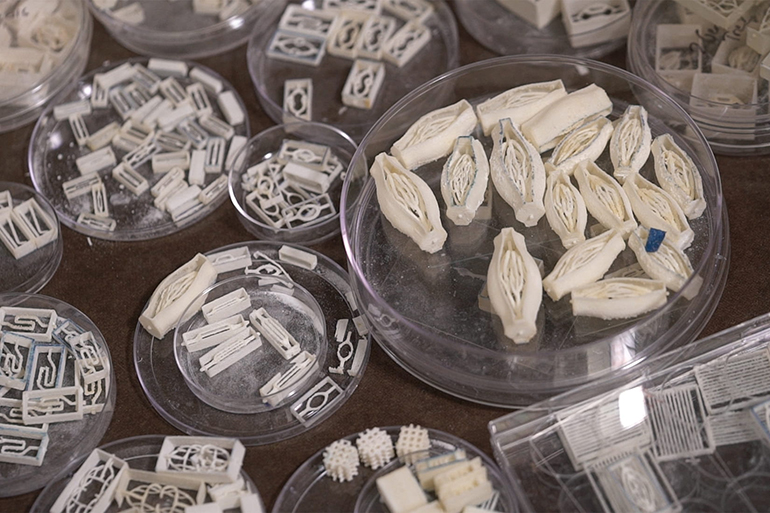To study the complex functionality of groups of cells, and to one day build replacement tissues, researchers have been trying to find a way to generate artificial vascular networks capable of supplying oxygen and nutrients to thousands of cells. Extrusion 3D printing, in which a liquefied material is layered down and allowed to harden, has proven to be insufficient to produce fine structures with complex morphologies. Rice University scientists, with the help of others, have now developed a way of using laser-sintering of powdered sugars to produce highly detailed structures that can hold onto live cells and keep them alive for weeks.
The researchers took hydrogels loaded with living cells and created vessel networks within these using sugar templates produced using the laser-sintering process. These networks were then pumped with oxygen and nutrients and because of their hierarchical structure, the vessels were able to sufficiently supply most of the cells so that they remained vibrant and kicking for at least two weeks. This was conducted with hepatocyte cells from the liver, which are particularly difficult to maintain outside the body, providing an extra validation of the new approach.
“One of the biggest hurdles to engineering clinically relevant tissues is packing a large tissue structure with hundreds of millions of living cells,” said study lead author Ian Kinstlinger, in a Rice press release. “Delivering enough oxygen and nutrients to all the cells across that large volume of tissue becomes a monumental challenge.”
“A major benefit of this approach is the speed at which we can generate each tissue structure,” added Kinstlinger. “We can create some of the largest tissue models yet demonstrated in under five minutes.”
In addition to the new 3D printing technique to build vascular structures, the researchers also created a custom algorithm that can be used to generate the necessary complexity of large networks and guarantee that they can be properly printed using the new technique.














